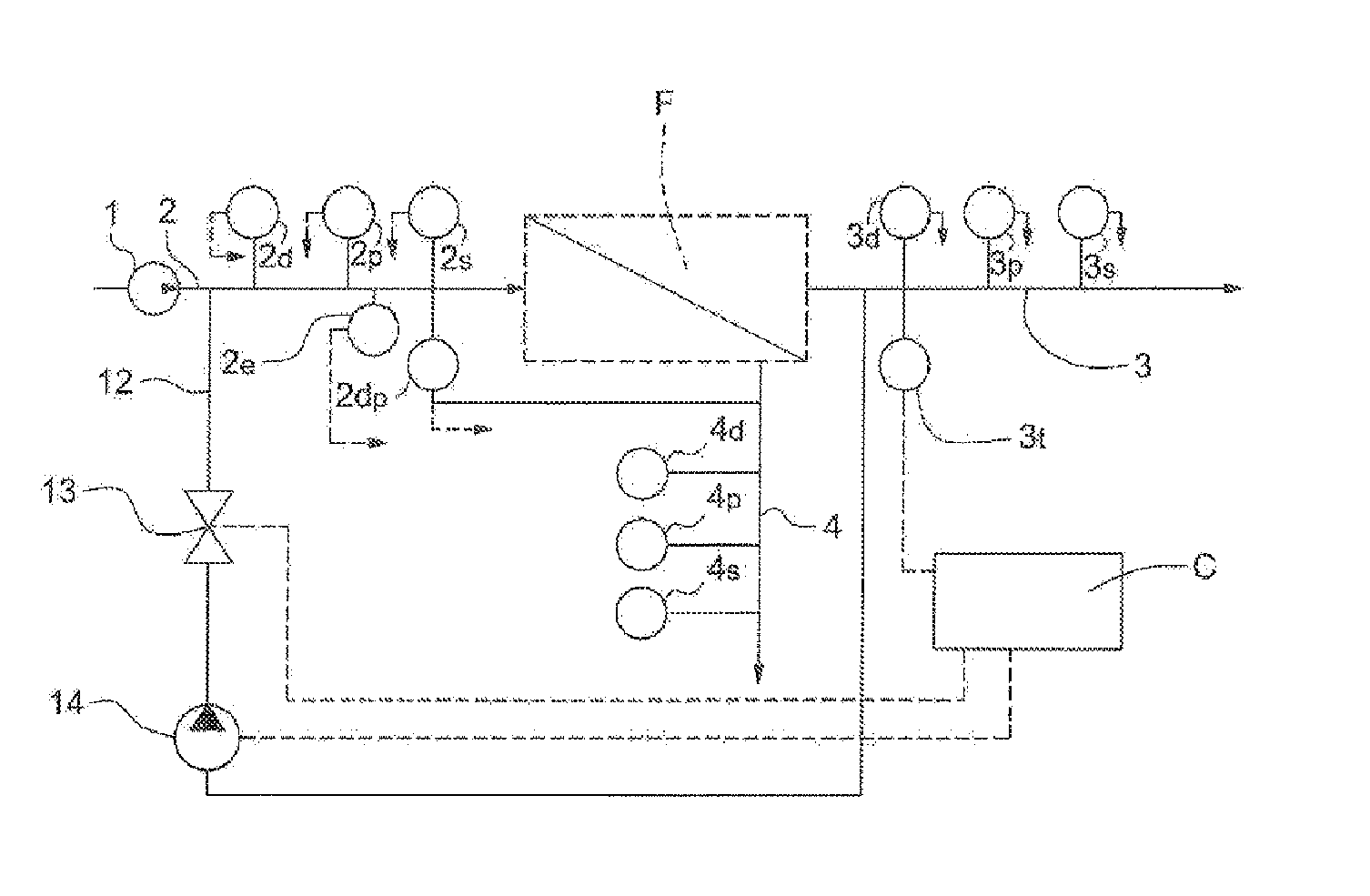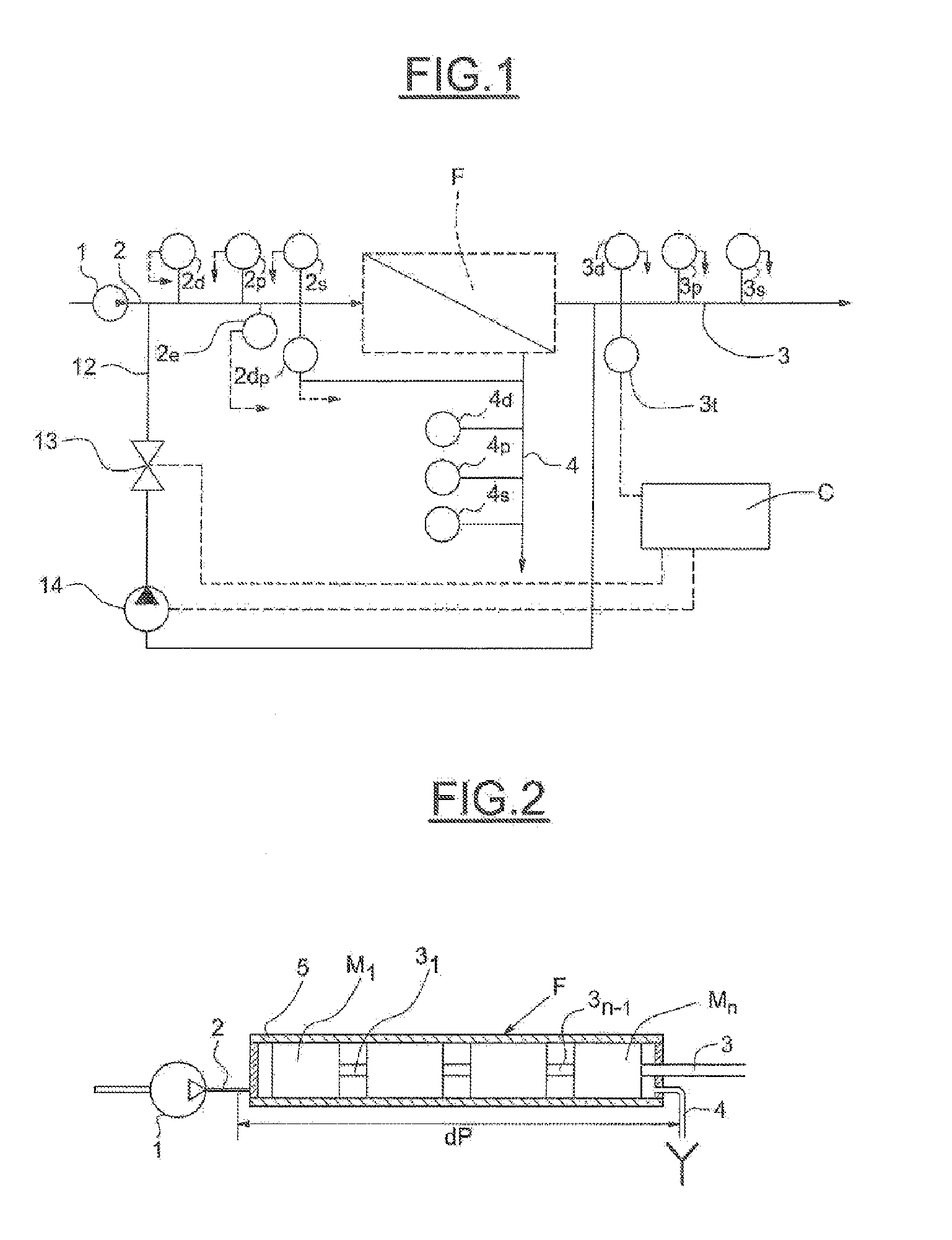Method and plant for managing the clogging of membrane modules and filtration membranes
- Summary
- Abstract
- Description
- Claims
- Application Information
AI Technical Summary
Benefits of technology
Problems solved by technology
Method used
Image
Examples
Embodiment Construction
[0045]The description is given with reference to spiral membranes, but the method of the invention applies to all filtration membranes, especially hollow-fiber membranes or planar membranes.
[0046]FIG. 1 of the drawings shows a water, particularly seawater, desalination plant comprising a membrane filtration unit F. The raw water is supplied by a pump 1, the outlet of which is connected, via a line 2, to the inlet of the filtration unit F. The filtered water, also called the permeate, leaves the unit F via a line 3. The concentrate, which corresponds to the fraction retained by the unit F, is discharged via a line 4.
[0047]Installed on the supply line 2 are:[0048]a flowmeter 2d giving the feedwater flow rate;[0049]a pressure sensor 2p giving the pressure of the feedwater at the inlet of the filtration unit; and[0050]a salinity sensor 2s giving the salinity of the feedwater.
[0051]Installed on the line 3 are:[0052]a flowmeter 3d giving the permeate flow rate;[0053]a pressure sensor 3p g...
PUM
| Property | Measurement | Unit |
|---|---|---|
| Thickness | aaaaa | aaaaa |
| Salinity | aaaaa | aaaaa |
| Pressure drop | aaaaa | aaaaa |
Abstract
Description
Claims
Application Information
 Login to View More
Login to View More - R&D
- Intellectual Property
- Life Sciences
- Materials
- Tech Scout
- Unparalleled Data Quality
- Higher Quality Content
- 60% Fewer Hallucinations
Browse by: Latest US Patents, China's latest patents, Technical Efficacy Thesaurus, Application Domain, Technology Topic, Popular Technical Reports.
© 2025 PatSnap. All rights reserved.Legal|Privacy policy|Modern Slavery Act Transparency Statement|Sitemap|About US| Contact US: help@patsnap.com



